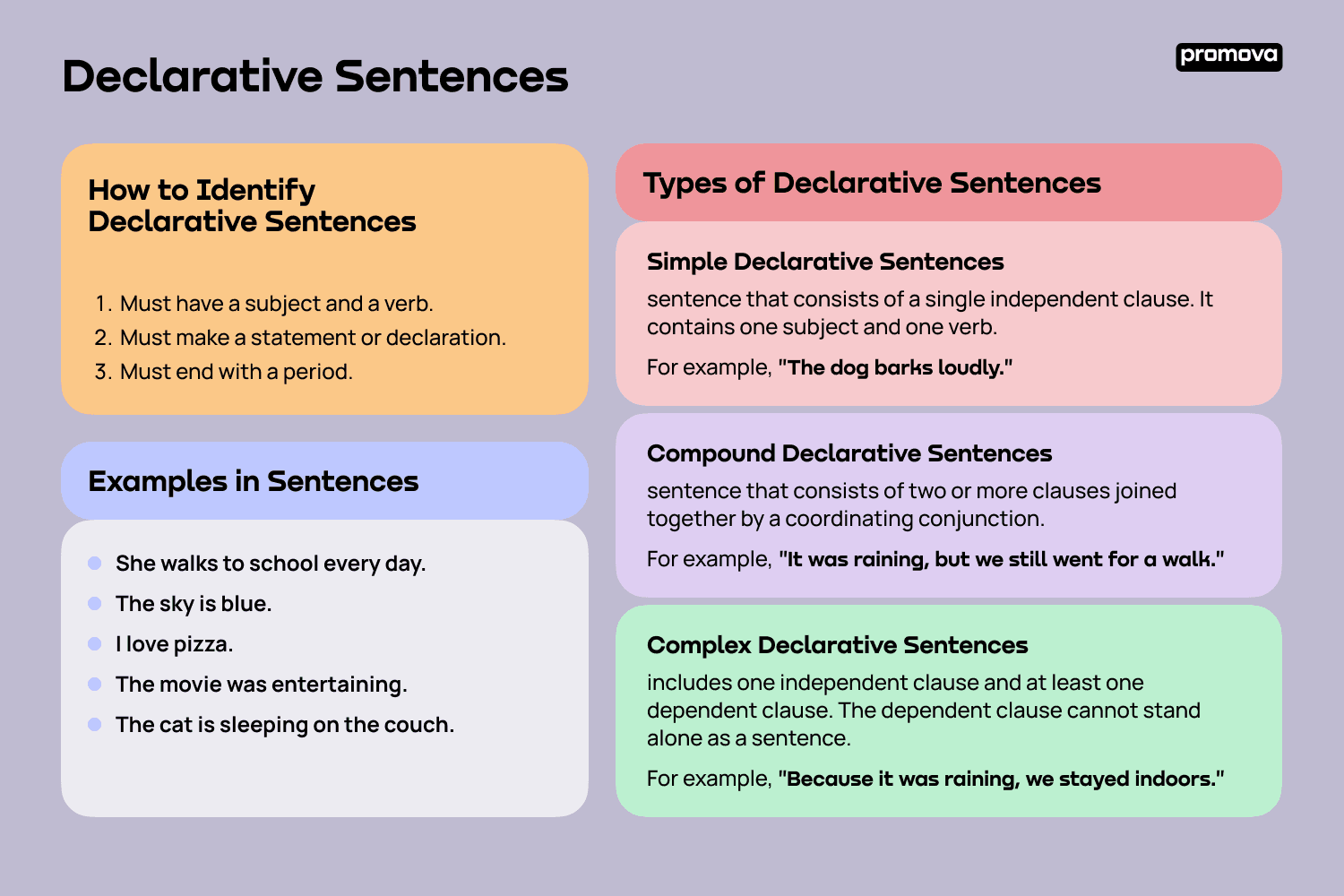Declarative Sentences
Contents
When it comes to writing and speaking in English, you will come across different types of sentences. Declarative sentences are among the most common. In this reference, we will be discussing what declarative sentences are, their characteristics, different types of declarative sentences, and how to identify them. Let's dive right in!
What is a Declarative Sentence?
A declarative sentence is a kind of sentence that makes a statement or declaration. It is used to convey information, facts, opinions, or ideas. It ends with a period and is the most common type of sentence used in the English language.
Characteristics of Declarative Sentences
Declarative sentences have some specific characteristics that differentiate them from other types of sentences. They include:
- Subject-Verb Agreement
A declarative sentence must have a subject and a verb, and they must agree in number. For instance, in the sentence "John eats apples," John is the subject, and eats is the verb.
- Positive or Negative
A declarative sentence can be positive or negative. For example, "The sun is shining" is a positive declarative sentence, while "I am not hungry" is a negative declarative sentence.
- Statement
Declarative sentences always makes a statement or declaration. It is used to provide information or express an opinion.
- Ends with a Period
Declarative sentences always end with a period. This indicates that the sentence has come to an end and that it is a complete thought.
Examples of Declarative Sentences
Here are some examples of declarative sentences:
- She walks to school every day.
- The sky is blue.
- I love pizza.
- The movie was entertaining.
- The cat is sleeping on the couch.
2
Types of Declarative Sentences
Declarative sentences can be classified into three types: simple, compound, and complex.
- Simple Declarative Sentences
A simple declarative sentence is a sentence that consists of a single independent clause. It contains one subject and one verb. For example, "The dog barks loudly."
- Compound Declarative Sentences
A compound declarative sentence is a sentence that consists of two or more clauses joined together by a coordinating conjunction. For example, "It was raining, but we still went for a walk."
- Complex Declarative Sentences
A complex declarative sentence includes one independent clause and at least one dependent clause. The dependent clause cannot stand alone as a sentence. For example, "Because it was raining, we stayed indoors."
How to Identify Declarative Sentences
To identify declarative sentences, you need to look for a few key characteristics.
- Must have a subject and a verb.
- Must make a statement or declaration.
- Must end with a period.
Here's an example: "I went to the store and bought some milk." This sentence has a subject (I) and a verb (went, bought), makes a statement, and ends with a period. Therefore, it is a declarative sentence.

Difference Between Declarative and Other Types of Sentences
Declarative sentences differ from other kinds of sentences like interrogative, imperative, and exclamatory sentences.
Interrogative Sentences
Interrogative sentences are used to ask questions. They end with a question mark. For example, "What time is it?"
Imperative Sentences
Imperative sentences help give commands or make requests. They can end with a period or an exclamation mark. For example, "Please turn off the lights."
Exclamatory Sentences
Exclamatory sentences help express strong emotions or feelings. They end with an exclamation mark. For example, "What a beautiful day!"
Summary
Declarative sentences are one of the most common types of sentences used in the English language. They make a statement or declaration and end with a period. They can be simple, compound, or complex. To identify a declarative sentence, look for a subject, a verb, and a statement. After a bit of practice, you'll become great at identifying these kinds of sentences in English!
Comments